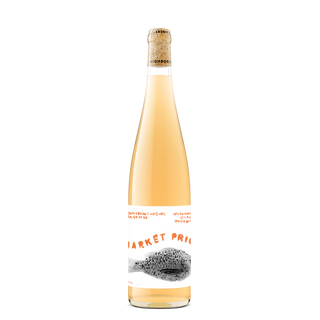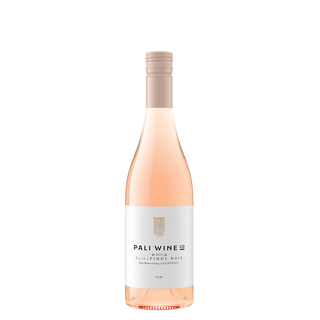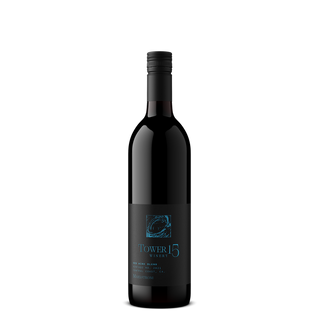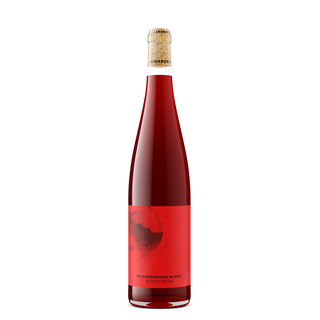Welcome to our latest Harvest Dispatch! Every two weeks, we’ll share behind-the-scenes updates from harvest, along with a special wine tied to the action—at 30% off (woohoo!). You’ll find the deal at the end of the post.
Orange Wine: The Harvest is Here!
On a recent trip to the winery, I couldn’t help but notice the orange wines at various stages of production. Some had just been picked, like our Chardonnay from the estate vineyard, freshly harvested and ready to start its journey. Others were just beginning fermentation, like our Marsanne-Roussanne co-ferment—a blend that’s hovering somewhere between juice and wine. And then there were the wines that had fully fermented, like the Pinot Gris, which had finished fermenting using carbonic maceration. We even had to dig that one out from a human-sized tank—it was quite the process!

It got me thinking about how much orange wine has evolved in our winemaking, and how much more people are talking about it. Whenever my friends—who are becoming more interested in wine as we get older—ask me about Pali and our family’s winery, they usually cut right to the chase: “So, do you make orange wine?”
They think it’s an insider question, and they’re right—it is, in a way. But orange wine has been around for thousands of years. In Georgia (the country, not the state), where wine is believed to have originated, people have been making orange wine by fermenting and aging it in clay vessels for centuries. So while it may seem like the newest trend, it’s actually one of the oldest styles of winemaking.

What Is Orange Wine, Anyway?
Orange wine is not made from oranges (though I can see why you might think that!). Instead, it’s made from white grapes that are fermented with their skins, similar to how red wine is made. This skin contact gives the wine its orange color and adds complex flavors and textures.
Typically, red wines are made by fermenting the grapes with their skins, which imparts color, tannins, and richness. White wines, on the other hand, are pressed immediately to separate the juice from the skins, resulting in a light, fresh wine. Orange wine flips the script, allowing white grape skins to remain with the juice during fermentation, leading to a more textured, structured wine with an orange hue.

Why Is Orange Wine So Popular?
Orange wine has gained a lot of attention in recent years, particularly in the natural wine community. It’s loved for its mix of textures, offering the acidity of white wine with the tannins and complexity of red. This balance makes it a fascinating choice for wine enthusiasts looking for something new and different.
Regions like Georgia, Italy, Spain, Turkey, and Greece have been making orange wine for centuries, but it wasn’t until the natural wine movement took hold that these regions started getting attention. The natural wine community values the traditional, hands-off methods used to make orange wine, and it didn’t take long for it to appear on wine lists in trendy restaurants across cities like L.A., San Francisco, and San Diego.
Young wine lovers, in particular, are drawn to orange wine. To them, it’s like a more rugged, unpredictable version of rosé. It’s a bit wild, sometimes funky, and offers a huge range of flavors depending on the grape variety and winemaking techniques. Plus, it’s incredibly food-friendly, making it a versatile pairing for all kinds of meals.
Our Orange Wine Harvest
At Pali, we’ve been experimenting with orange wine for a long time. We used to make a barrel or two of skin-contact Chardonnay each year, blending it into our white Chardonnay wines to add complexity. But now, we’re fully committed to making more orange wines, and this year’s harvest is especially exciting.
In addition to the Marsanne-Roussanne co-ferment I mentioned earlier, we’ve got Pinot Gris, Gewürztraminer, Orange Muscat, Chardonnay, and more fermenting with skin contact. Marsanne and Roussanne, with skin contact is new to us this year - their green skins won’t add much color, but we’re excited to see how they develop in flavor. We’re also working on a Pét Nat version of Pinot Gris, which will have those fun, rustic bubbles that we love in our Pét Nats.

Returning Favorites & New Releases
We’re also bringing back some of our most popular orange wines. Dawn and Market Price will be making a return, and introducing our new skin-contact Chardonnay, Still Life!
In honor of this upcoming release, we’re offering 30% off the 2023 vintages of Dawn and Market Price, with discount code ORANGE.
We’d love to hear your thoughts on orange wine and which styles resonate with you most. Try our wines, sign-up for our wine club, and let us know what you think!





